Abstract
We describe in this paper cell survival studies, using in vitro clonogenic assays, performed on the B16 melanoma treated in situ with various cytotoxic agents. In addition we have determined the effects of these agents on the yield of cells obtained by trypsinization. In untreated tumours the mean cell yield was approximately 10(8)/g, which is 20--30% of the cells actually present in the tissue. The plating efficiency was approximately 40%. Most agents rapidly affected both cell yield and cell survival. For example, within 20--30 h, gamma-radiation and several alkylating agents reduced cell yield by about 40%. The cell yield change was associated with an increase in mean cell size. Cell yield was reduced even more (approximately 70%) by Vinca alkaloids. This large reduction was associated with extensive cell lysis, observed as an increase in the necrotic fraction of tumours from approximately 35% to approximately 70%. Adriamycin, bleomycin and Ara-C also produced a moderate reduction in cell yield (approximately 40%), but actinomycin D did not reduce cell yield and FU increased it by about 30%. Only gamma-radiation, cyclophosphamide, CCNU, BCNU and melphalan produced more than a 90% reduction in cell survival, although there was a small but measurable reduction with all other agents except vinblastine, HN2 and actinomycin D.
Full text
PDF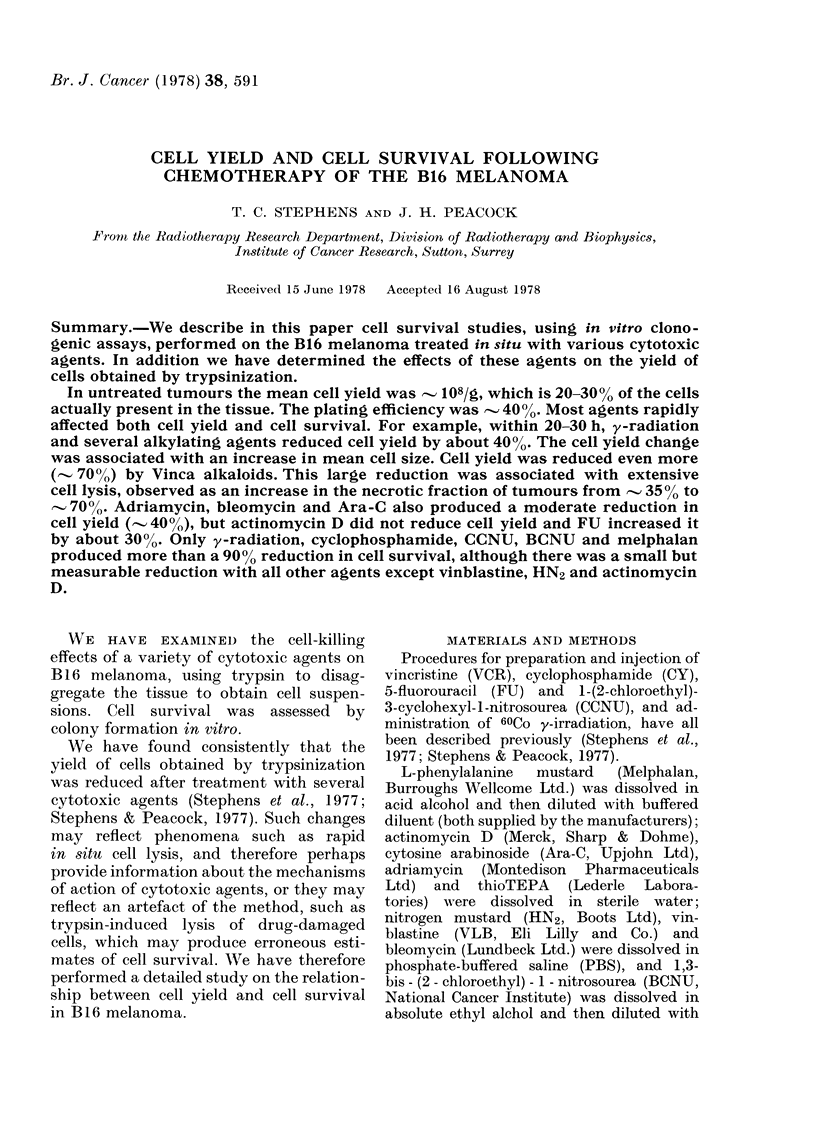
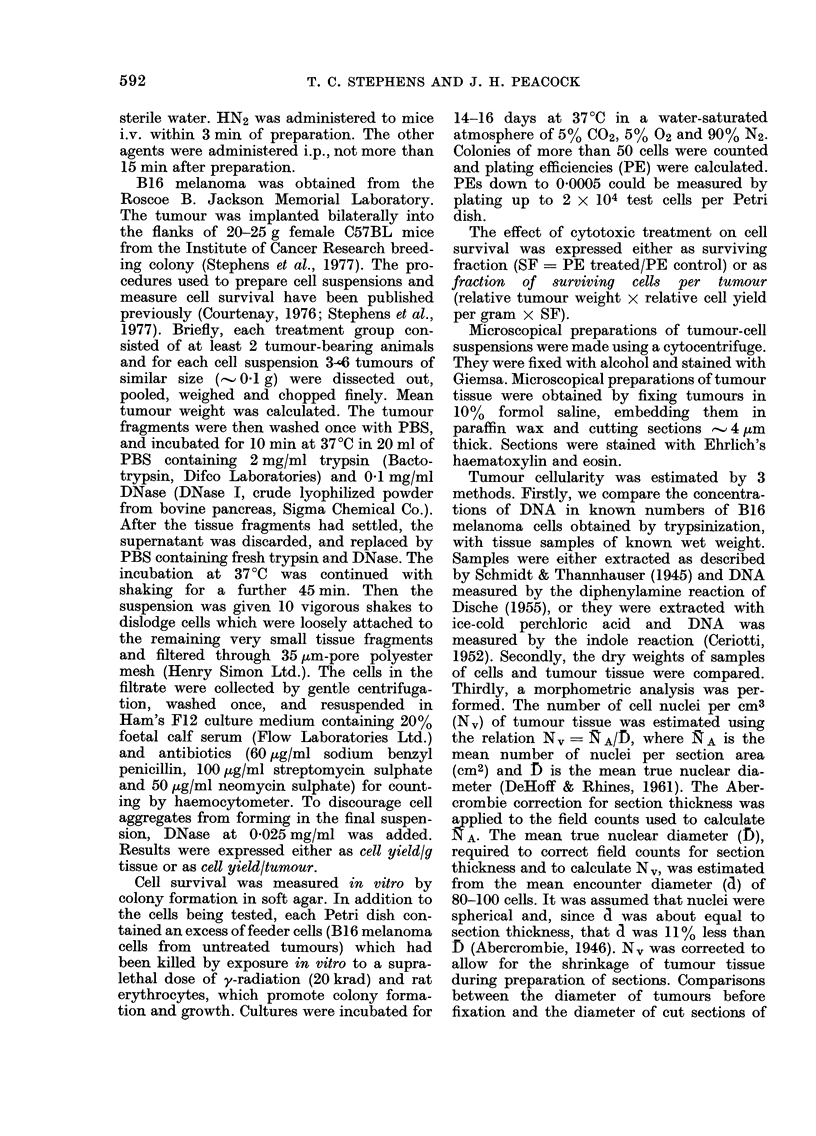
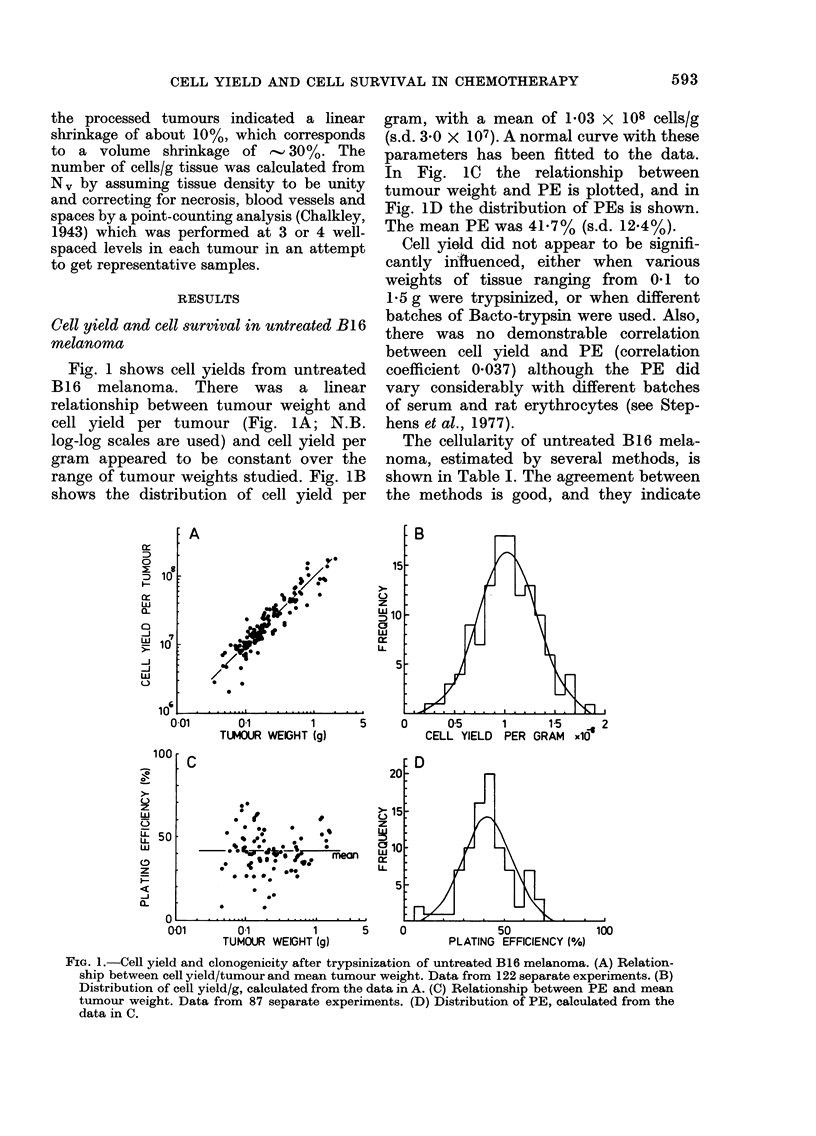
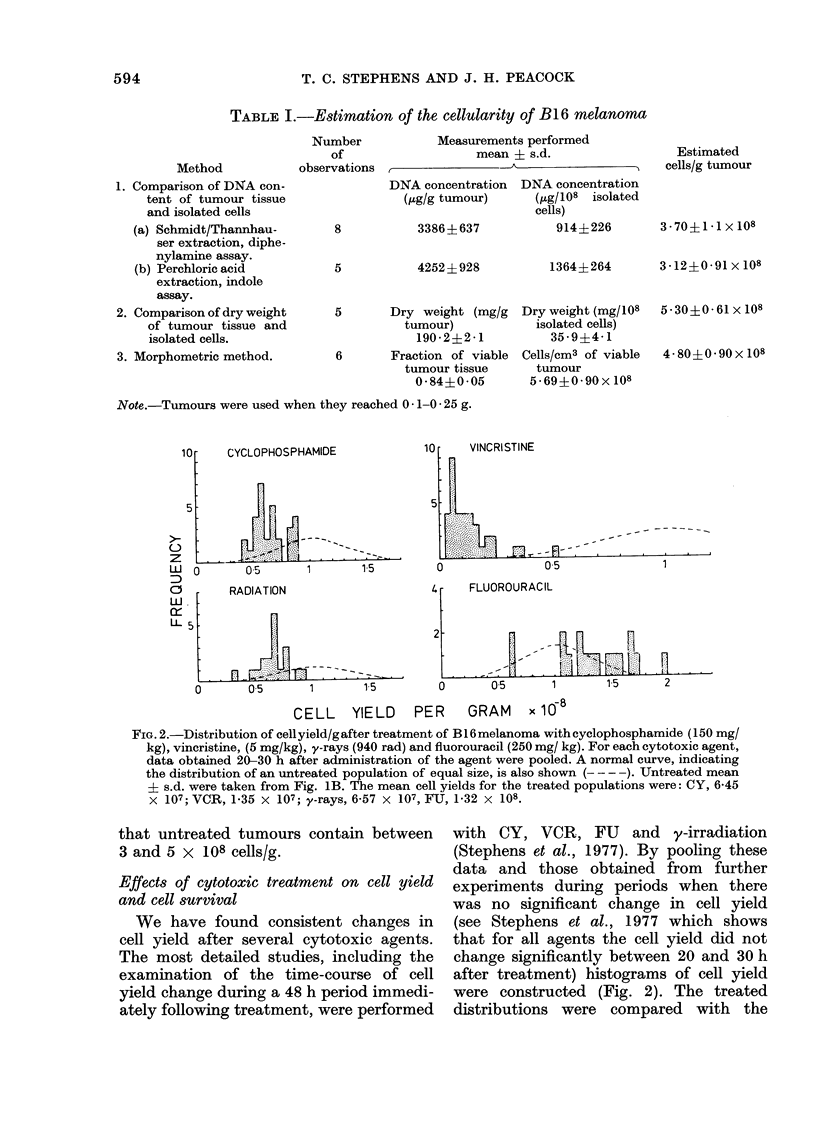
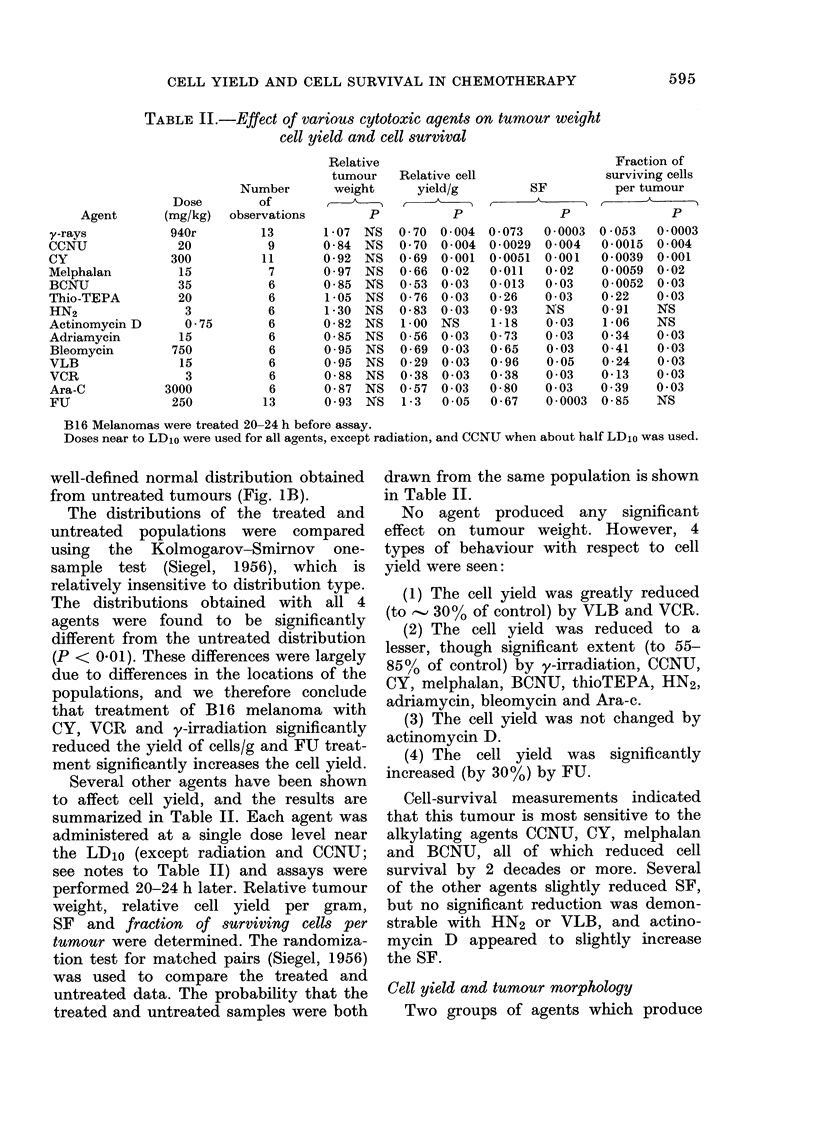
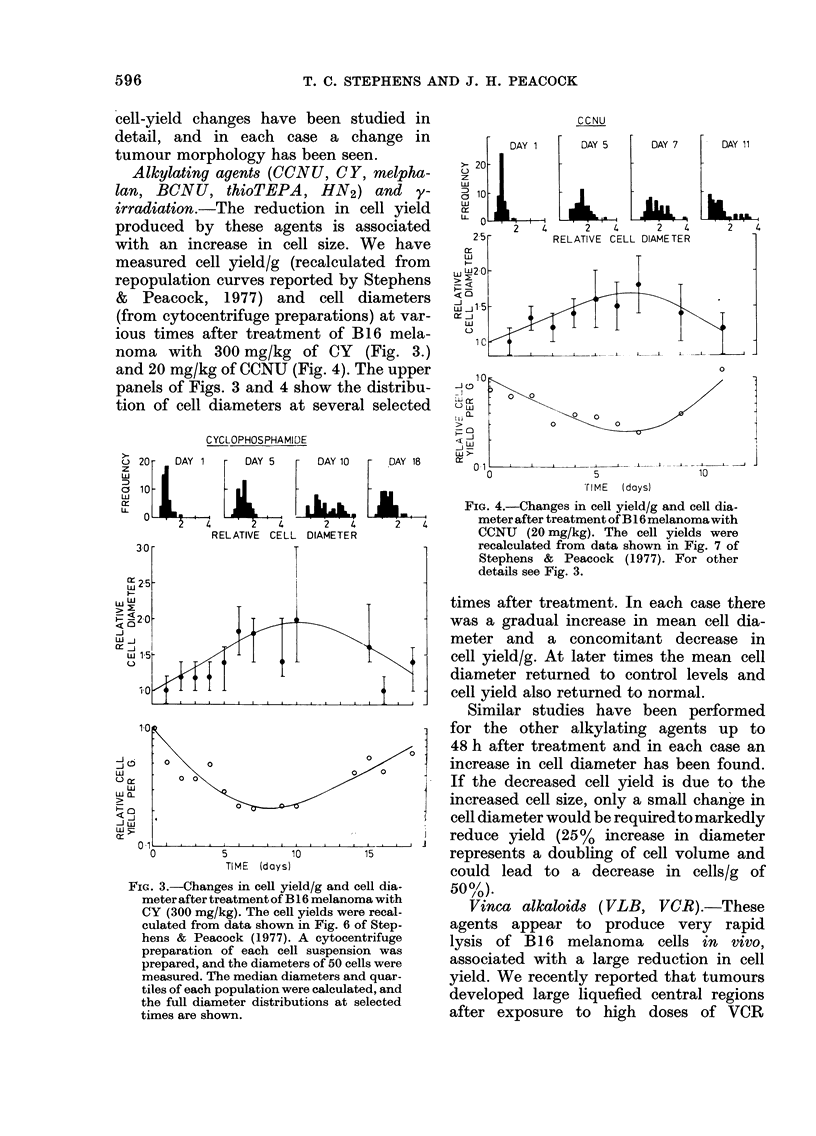
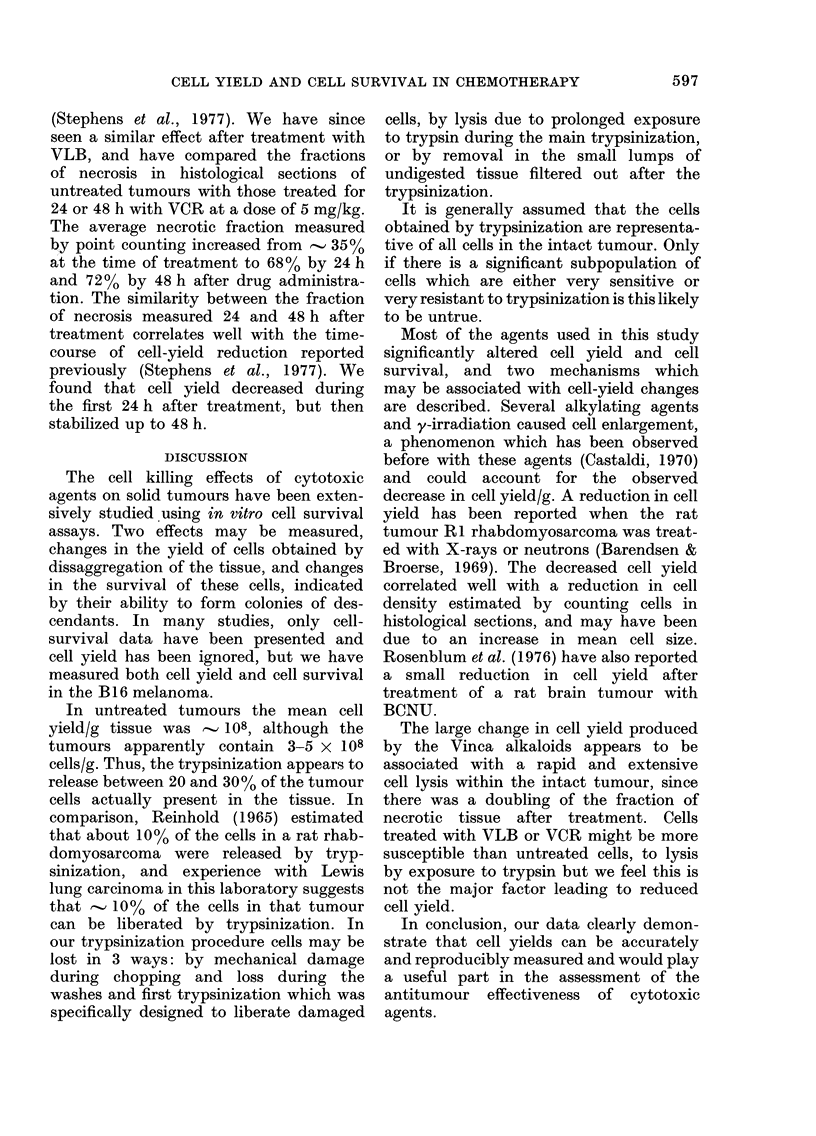
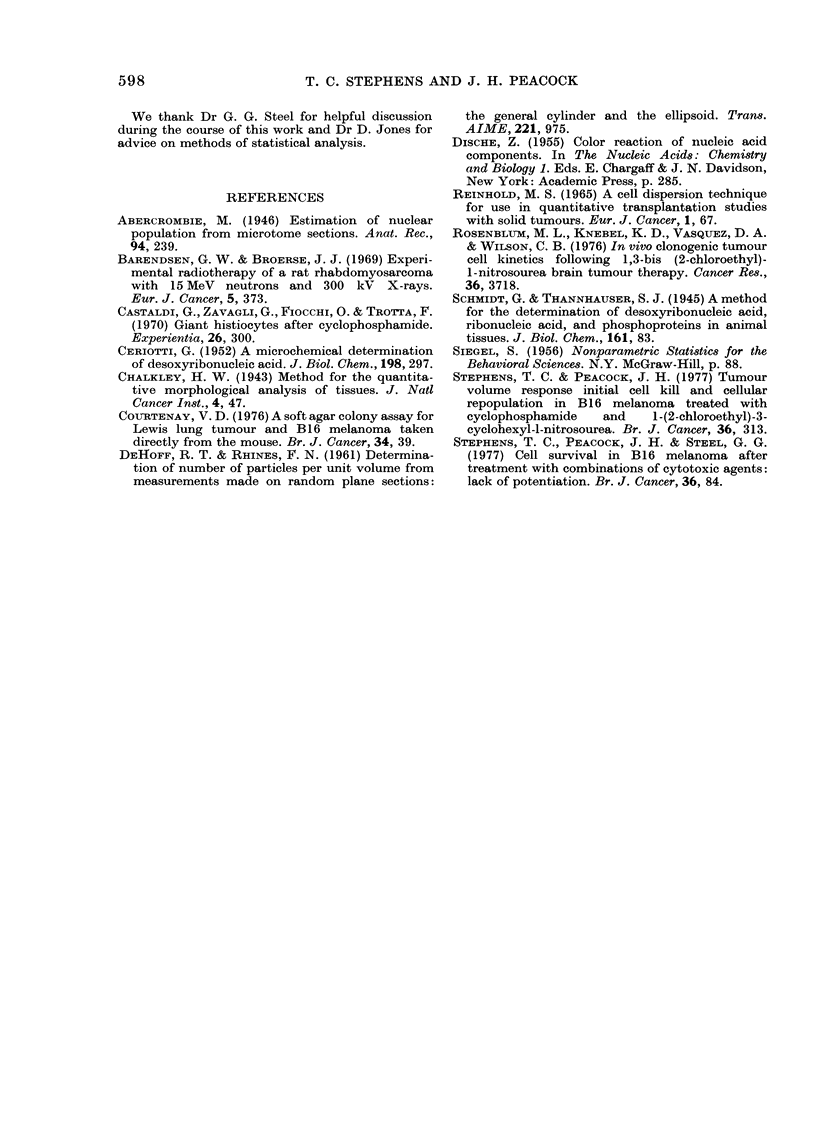
Selected References
These references are in PubMed. This may not be the complete list of references from this article.
- Barendsen G. W., Broerse J. J. Experimental radiotherapy of a rat rhabdomyosarcoma with 15 MeV neutrons and 300 kV x-rays. I. Effects of single exposures. Eur J Cancer. 1969 Sep;5(4):373–391. doi: 10.1016/0014-2964(69)90051-6. [DOI] [PubMed] [Google Scholar]
- CERIOTTI G. A microchemical determination of desoxyribonucleic acid. J Biol Chem. 1952 Sep;198(1):297–303. [PubMed] [Google Scholar]
- Castaldi G., Zavagli G., Fiocchi O., Trotta F. Giant histiocytes after cyclophosphamide. Experientia. 1970 Mar 15;26(3):300–301. doi: 10.1007/BF01900109. [DOI] [PubMed] [Google Scholar]
- Reinhold H. S. A cell dispersion technique for use in quantitative transplantation studies with solid tumours. Eur J Cancer. 1965 Jun;1(1):67–71. doi: 10.1016/0014-2964(65)90081-2. [DOI] [PubMed] [Google Scholar]
- Rosenblum M. L., Knebel K. D., Vasquez D. A., Wilson C. B. In vivo clonogenic tumor cell kinetics following 1,3-bis(2-chloroethyl)-1-nitrosourea brain tumor therapy. Cancer Res. 1976 Oct;36(10):3718–3725. [PubMed] [Google Scholar]
- Stephens T. C., Peacock J. H., Steel G. G. Cell survival in B16 melanoma after treatment with combinations of cytotoxic agents: lack of potentiation. Br J Cancer. 1977 Jul;36(1):84–93. doi: 10.1038/bjc.1977.158. [DOI] [PMC free article] [PubMed] [Google Scholar]
- Stephens T. C., Peacock J. H. Tumour volume response, initial cell kill and cellular repopulation in B16 melanoma treated with cyclophosphamide and 1-(2-chloroethyl)-3-cyclohexyl-1-nitrosourea. Br J Cancer. 1977 Sep;36(3):313–321. doi: 10.1038/bjc.1977.195. [DOI] [PMC free article] [PubMed] [Google Scholar]


